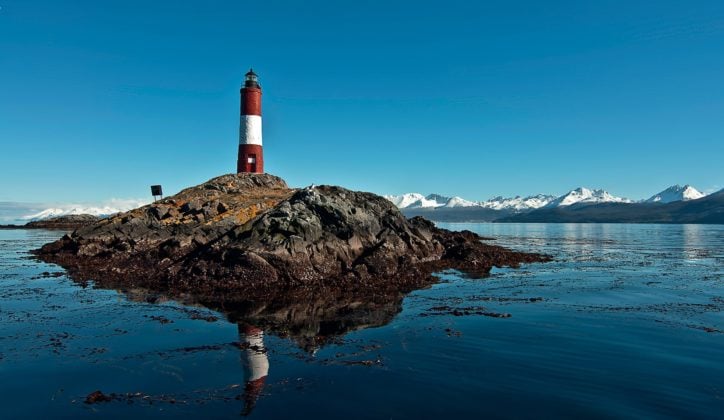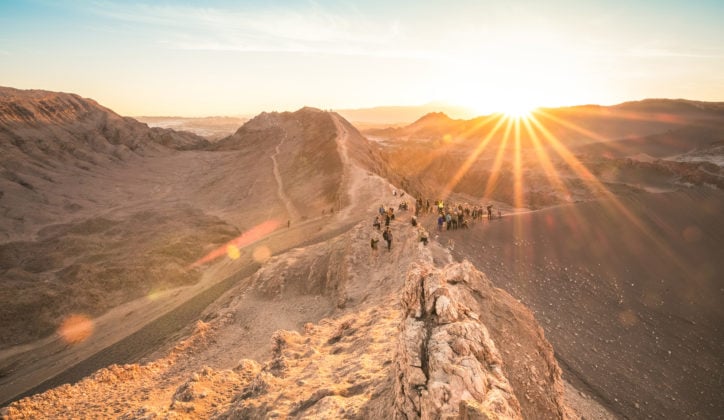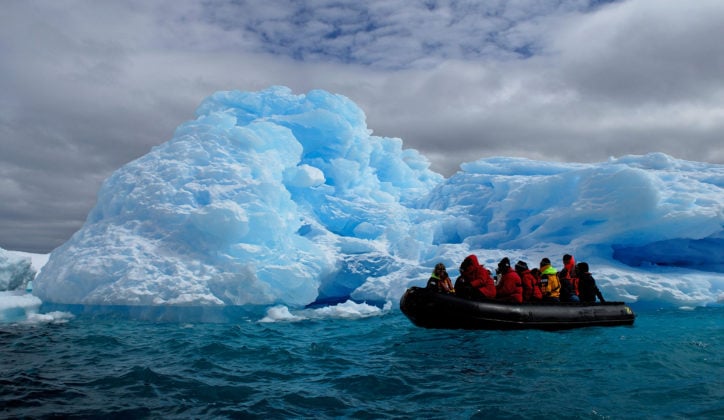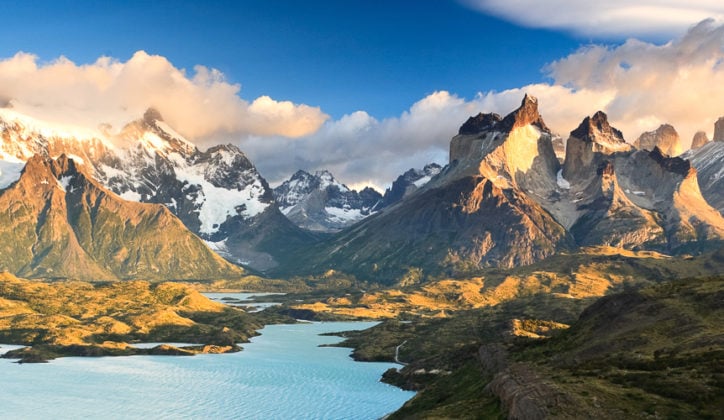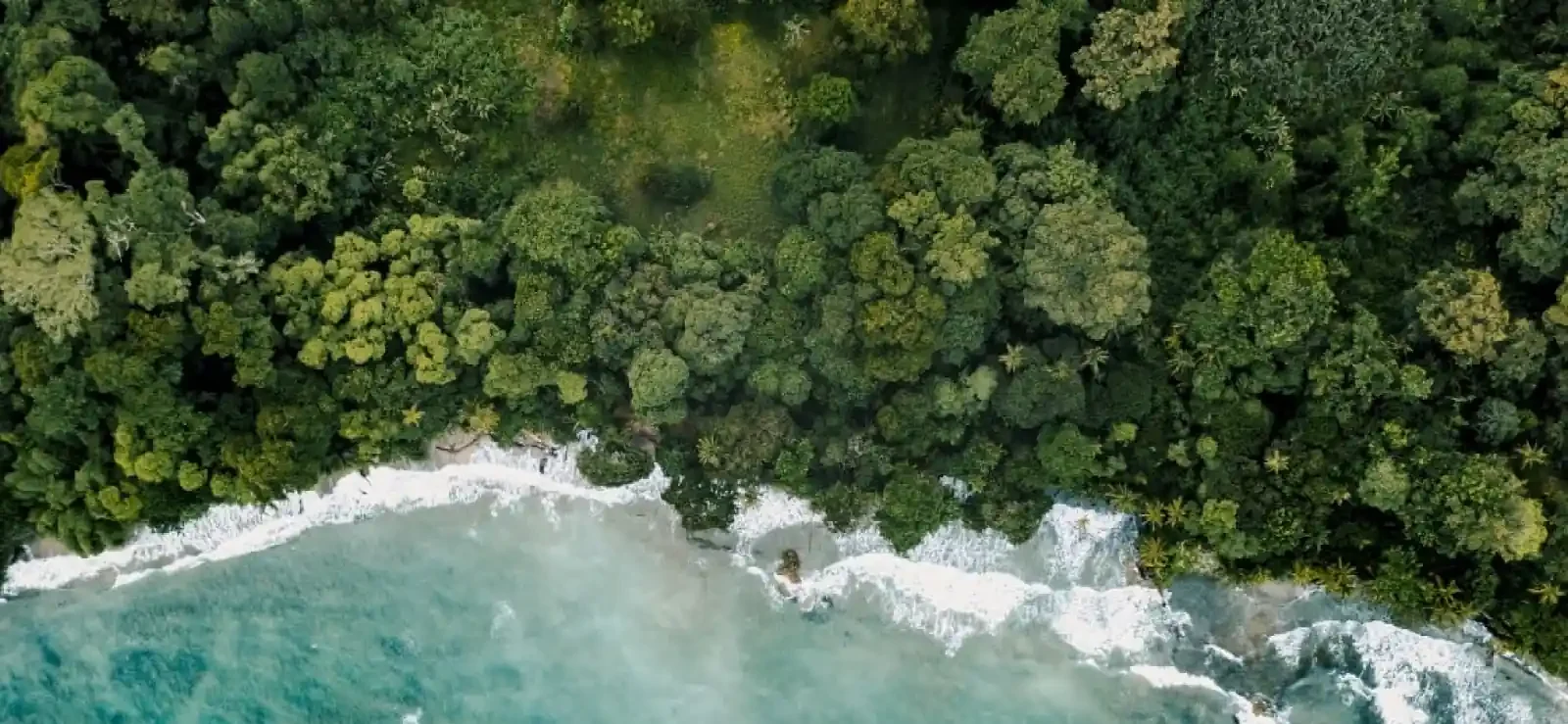Published on: July 24th, 2017
Last updated: November 29th, 2024
Chile is one of the longest countries on earth, spanning more than 4,200 kilometres (2,600 miles) from north to south. This means it has an incredible variety of climate conditions and landscapes, from the world’s driest nonpolar desert to alpine peaks and glaciers – and a vast array of experiences to match.
The best time to visit Chile depends on which part of the country you’re headed to and what you’re planning to do. Summer (December–February) is the peak season across the country, while the shoulder seasons in spring (September–November) and autumn (March–May) bring smaller crowds, pleasant weather and your pick of the best hotels.
Seasonal differences are more pronounced in Patagonia and Aysén where winter (June–August) is inhospitably harsh. Temperatures in the Atacama up north and the central region around Santiago don’t vary as much throughout the year, but seasonal events like the wine harvest and local holidays may tip the scales in favour of a certain month.
Chile Month-by-Month Weather Guide
If you’re trying to decide when to visit Chile, the first thing to consider is the weather. Temperatures, rainfall and even wind conditions could make or break your trip, and all of these factors depend on your destination and timing. Here’s what to expect during each month in key spots across the country.
January in Chile
January is summer in Chile and one of the most popular months for tourism. In Santiago, daily highs often exceed 30ºC (86ºF), while Patagonia can be as warm as 20ºC (68ºF). This is the peak season for exploring the country’s southernmost regions, but it’s also a good time to visit the capital if you want to avoid crowds and don’t mind the hot weather.

February in Chile
February is a continuation of summer and peak tourism season in Chile. Temperatures are similar to those of January, with lovely weather down south and some intense heat in the north. If you’re travelling to the Atacama Desert, keep in mind that the chance of rain is highest in late January and early February.

March in Chile
March is the beginning of autumn in Chile, and the changing leaves make the landscapes of the Lake District and wine regions even more stunning. Temperatures in Santiago are still warm, with highs around 28ºC (82ºF). Patagonia is noticeably chillier as winter approaches, but March can be a good time to visit to avoid crowds – just make sure to pack warm layers and rain gear.

April in Chile
Chile’s autumn extends into April, which is similar to March in terms of weather. Santiago sees highs around 24ºC (75ºF), while San Pedro de Atacama (the main desert oasis town) peaks in the low 20sºC (low 70ºsF). Expect crowds to thin out even further in Patagonia and the Lake District. This is a great month to experience vendimias (harvest festivals) in the wine regions.

May in Chile
May is late autumn, and temperatures drop significantly in the south of Chile. Santiago also gets colder and rainier, with the average precipitation doubling from April to May. It’s still possible to visit Patagonia before places start closing for winter, and in fact this is one of the best months to spot pumas in Torres del Paine. The Atacama Desert is also relatively cool and dry in May.

June in Chile
June marks the beginning of winter in Chile, which is also the low season throughout the country. Santiago, Valparaíso and the wine regions become a bit cold and rainy, with highs around 16ºC (61ºF). We don’t recommend visiting Patagonia or the Lake District in June, as temperatures can drop below 0ºC (32ºF) and inclement weather is likely.

July in Chile
July is the height of Chile’s winter. This month brings the most rain and snow (depending on where you are) and some of the harshest conditions down south, though temperatures in the central regions hover around 15ºC (59ºF). This is also the best month for snow sports in the mountains around Santiago. Like June and August, it’s not a good month to go to Patagonia.

August in Chile
August is the final month of winter in Chile. Temperatures start to rise and the chance of rain and snow gradually decreases as spring approaches, but it’s still not an ideal time to go exploring in the south. The best place to visit in Chile in August is probably the north. In the Atacama Desert, daytime temperatures can reach 18ºC (64ºF) – but nights are frigid.

September in Chile
In Chile, September heralds the start of spring. Temperatures start rising all over the country, though Patagonia is still extremely cold and may not be fully accessible. This is the beginning of the shoulder season and a great time to visit the central region and capital. Independence Day is celebrated on 18th September with lively parties, parades and festive food.

October in Chile
October is the peak of springtime in Chile. Santiago warms up to the low 20sºC (low 70ºsF) and Patagonia is fully accessible for the first time since May, though of course it’s still chilly – daytime highs are around 7ºC (45ºF) in Torres del Paine. The Lake District is gorgeous at this time of year, featuring wildflowers and vibrant green landscapes (thanks to spring showers).

November in Chile
November is a transitional month between spring and summer in Chile, with balmy temperatures all across the central region. Santiago can reach the mid 20sºC (high 70sºF) and the Lake District continues to be warm and rainy. Patagonia starts to get more crowded toward the end of the month, but it’s still a good time to visit before the summer rush hits.

December in Chile
December is the start of summer and peak tourist season in Chile. The warmest temperatures of the year make Patagonia a popular destination, though it usually stays below 21ºC (70ºF). This is one of the quietest months in Santiago as many locals leave the city for the holidays. We suggest ringing in the New Year in Valparaíso or even at the southernmost tip of South America.

The Best Things to Do in Chile by Season
Because Chile’s weather varies so much throughout the year and across the country, some activities are better suited to certain seasons than others. This is especially true for outdoor experiences – a category that includes many of the best things to do in Chile. Here are a few of our favourite activities and the best months to enjoy them.

Go hiking in Patagonia
The best time to go hiking in Patagonia is summer (December–February). This is when temperatures are warmest – think highs around 20ºC (68ºF) – which makes outdoor adventures much more pleasant. However, summer can also bring crowds and strong winds. If you’re okay with colder conditions, consider going hiking in spring or autumn instead.

Enjoy wine harvest festivals
The autumn months of March and April are the best time to experience Chile’s vendimias, or wine harvest festivals, most of which fall in these months. This is a fantastic excuse to tour the vineyards and do a wine tasting (or several). You can also participate in local traditions, learn about winemaking techniques and enjoy live music against a backdrop of vibrant foliage.

Stargaze in the desert
The best time to stargaze in the Atacama Desert is spring and early summer (September–December), offering a perfect combination of clear conditions and mild temperatures. January and February bring a higher chance of rain and clouds (not to mention crowds). And while winter (June–August) boasts clear skies, nighttime temperatures can drop below freezing.

Spot puma cubs in Torres del Paine
If you’re hoping to see the elusive puma, head to Torres del Paine in April or May. Patagonia has the world’s highest density of wild pumas and these autumn months are when you’re most likely to spot small cubs with their mothers. The best place to see them is Torres del Paine National Park, where the species is protected by conservation efforts.
The Best Time to Visit the Atacama Desert and the Salt Flats
The Atacama Desert is a year-round destination. Daytime temperatures don’t change much throughout the year, hovering around 16–24ºC (61–75ºF). During winter (June–August) the main difference is that it gets much chillier at night, so bring layers. Rain is most likely towards the end of summer (January–February) and it’s not uncommon for roads to be flooded.
The Best Time to Visit Santiago
The best time to visit Santiago, Chile is generally during spring (September–November) or autumn (March–May) when temperatures are pleasant. That said, during the hot summer months of December through February many locals leave the metropolitan area – which is home to around 40% of Chile’s population – making the city much quieter and less crowded.
The Best Time to Visit the Lake District
Chile’s Lake District is in northern Patagonia and has a less extreme climate than the southern regions, which makes it possible to visit all year round. Late spring, summer and early autumn (October–March) offer the best conditions for outdoor activities. December and January are the busiest months, while October boasts spring flowers and March is ideal for autumn leaves.
The Best Time to Visit Chilean Patagonia
The best time to visit Chilean Patagonia for optimal weather is summer (December–February). However, this season is also the most crowded and prone to incredibly strong winds (up to 120 kph or 75 mph). Visit in the shoulder seasons (October–November and March–May) for chillier temperatures and thinner crowds. If you travel during winter (June–September) expect bitterly cold weather, some of our favourite hotels closed for the season and slower travel times due to the adverse conditions. Rain is possible all year round.
The Best Time to Visit Easter Island
The best time to visit Easter Island is typically the summer (December to March), the driest time to go – although, being an island, there are no guarantees! The rainy season runs from May (which has the highest rainfall) to October.
You can expect temperate weather most of the time on Easter Island, with the temperature averaging just below 70 degrees year-round. The first two weeks of February brings the Tapati Festival, a huge Rapa Nui cultural event with dancing and singing competitions, along with a plethora of sporting events. Well worth the trip, we can tell you.
Trip Inspiration
Ready to start planning?
Whatever you want from your trip to Chile, our team of expert travel designers are ready to help.



